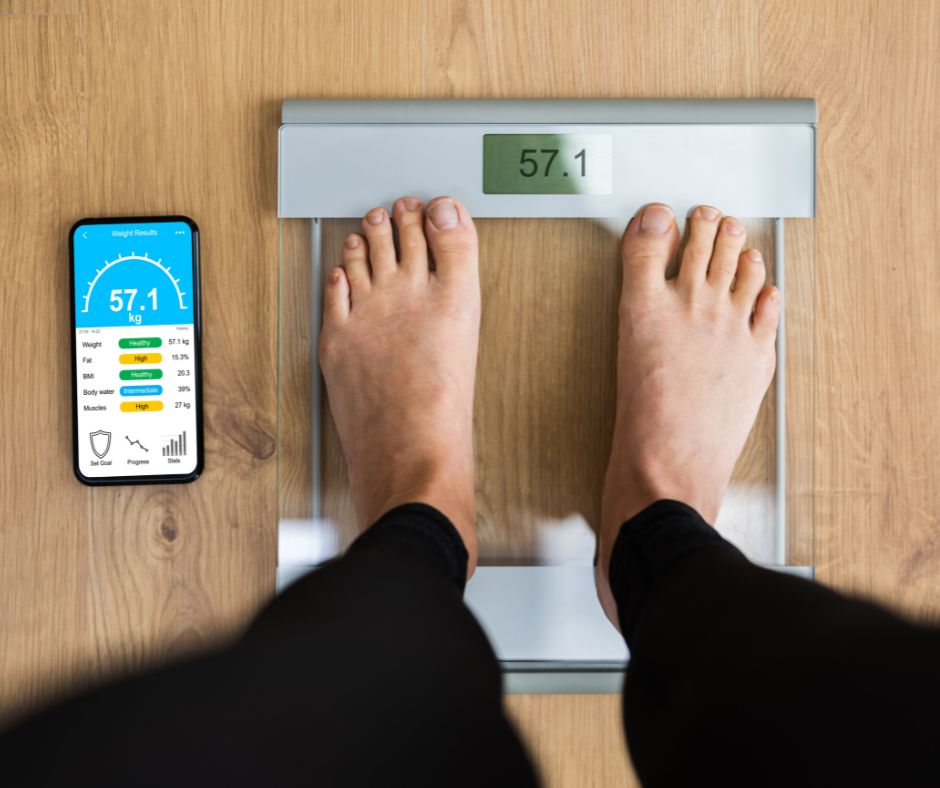Telehealth has dramatically changed how primary care is delivered, especially since the COVID-19 pandemic. Analyses of commercial claims in 2022 show that telehealth services were mostly rendered by primary care, psychiatry and psychology clinicians, as well as social workers. This shift expands healthcare access. It’s also introduced new challenges and opportunities for providers and patients that use telehealth in primary care.
In this article, we’ll explore the various facets of telehealth in primary care, its benefits, challenges, and best practices for implementation.
Contents
Benefits of Telehealth in Primary Care
Let’s look at some advantages of using telehealth in a primary care practice.
Cost-effectiveness
Telehealth can be cost-effective for both healthcare providers and patients. It reduces overhead costs for healthcare facilities and lowers patient expenses related to transportation and time off work.
- Reduced Overhead: Healthcare providers can save on costs related to office space, utilities, and administrative staff.
- Lower Patient Costs: Patients save money on travel expenses and can avoid taking unpaid time off work for appointments.
- Efficient Resource Use: Telehealth can help optimize the use of healthcare resources by reducing the need for in-person visits for minor issues.
Increased access to care

Telehealth has made healthcare more accessible, especially for those in remote or underserved areas. Patients no longer need to travel long distances to see a doctor. This is particularly beneficial for people with mobility issues or those without reliable transportation.
- Remote Access: Telehealth allows patients in rural areas to access specialists and primary care providers without the need for travel.
- Convenience: Patients can schedule appointments at times that work best for them, reducing the need to take time off work or arrange childcare.
- Reduced Costs: Telehealth can save patients money on travel expenses and lost wages from taking time off work.
Improved patient engagement
Telehealth makes it easier for patients to stay in touch with their healthcare providers. This can lead to better patient adherence to treatment plans, and improved health outcomes (Hatef et al., 2024). A few specific telehealth offerings that help improve patient engagement are:
- Continuous Monitoring: Telehealth allows for continuous monitoring of chronic conditions, allowing for prompt interventions.
- Follow-Ups: Virtual follow-up appointments can ensure that patients are following their treatment plans and making necessary lifestyle changes.
- Patient Education: Telehealth platforms can provide educational resources to help patients understand their conditions and treatments better.
Telehealth case management (TCM)

In a Canadian study, health providers noted that TCM helped them to effectively coordinate care and support patients’ self-management, including remote monitoring, which improves patient engagement between visits.
TCM is well-suited for activities like check-ins, refills, reminders, and care coordination, but in-person appointments are often required for complex needs and initial assessments. Providers noted that video visits can help bridge the gap between in-person and phone visits, but the lack of face-to-face interaction can obscure visual health cues (Delahunty-Pike et al., 2023).
Phone visit attendance vs. video visits
A study published in the Journal of General Internal Medicine compared non-attendance rates for telehealth and in-person primary care visits at a large urban healthcare system (Chen et al., 2022). The researchers found that telephone visits had similar or lower non-attendance rates compared to in-person visits, but video visits had higher non-attendance rates. This suggests that phone visits may be easier for patients than video visits.
They also identified certain demographic groups that had consistently higher or lower non-attendance rates across visit modalities. Patients who were White, male, and had public insurance or no insurance, and generally had higher non-attendance rates. In contrast, patients who were Asian or had more comorbidities had lower non-attendance rates.
These findings highlight the importance of considering patient preferences, digital access, and demographic factors when implementing telehealth services.
Telehealth Challenges and Limitations
While telehealth has many advantages in healthcare, it also presents several challenges that healthcare providers and patients must navigate.

Technical barriers
The technical barrier is one of the biggest challenges people face when using telehealth. Some patients don’t have access to the necessary technology or the digital literacy to use telehealth platforms effectively.
- Internet Connectivity: Reliable internet access is essential for telehealth, but not all patients have access to high-speed internet.
- Access to Devices: Some patients may not have access to smartphones, tablets, or computers needed for telehealth visits.
- Digital Literacy: Patients and providers need to be comfortable using telehealth technology.
Legal and reimbursement issues

Telehealth regulations and reimbursement policies vary widely, which can create challenges for healthcare providers (Mechanic et al., 2022).
- Variable Regulations: Telehealth regulations differ by region, making it challenging for providers to navigate the legal landscape.
- Reimbursement Challenges: Obtaining reimbursement for telehealth services can be difficult, as insurance policies and government programs may not always cover these services.
- Licensing Issues: Providers may need to be licensed in the state where the patient is located, which can complicate the delivery of telehealth services.
Quality of care concerns
Some healthcare providers and patients are concerned about the quality of care delivered via telehealth. While telehealth can be effective for many types of care, it may not be suitable for all situations.
- Physical Examinations: Certain conditions require a physical examination, which can be difficult to perform remotely.
- Misdiagnosis Risks: The lack of in-person interaction can increase the risk of misdiagnosis or missed diagnoses.
- Patient-Provider Relationship: Building a strong patient-provider relationship can be harder in a virtual setting.
Best Practices to Implement Telehealth in Primary Care
To successfully implement telehealth in a primary care practice, there are several best practices healthcare providers should consider.
Technology and infrastructure
Implementing telehealth successfully requires investment in reliable technology and infrastructure.
- Reliable Platforms: Healthcare providers should invest in robust telehealth platforms that offer high-quality video and audio capabilities.
- Cybersecurity: Protecting patient data is crucial. Providers should implement strong cybersecurity measures to ensure patient privacy.
- Technical Support: Offering technical support to both patients and providers can help overcome some of the technical barriers to telehealth.
Training and support

Proper training and support are essential for both healthcare providers and patients to use telehealth effectively.
- Provider Training: Healthcare providers should receive comprehensive training on how to use telehealth platforms and deliver care virtually.
- Patient Support: Providing patients with resources and support can help them navigate telehealth platforms and feel more comfortable with virtual visits.
- Ongoing Education: Continuous education for providers and patients can help keep them updated on best practices and new developments in telehealth.
Patient-centered approaches

Health providers should customize telehealth options to meet the individual needs of their patients and ensure the best possible outcomes. Some ideas:
- Personalized Care: Telehealth services should be customized to address the specific needs and preferences of each patient (Cannedy et al., 2023).
- Managing Cost Expectations: It’s important to manage patient expectations around insurance coverage and reimbursement for telehealth, as uncertainty can deter long-term investment (Khairat et al., 2023).
- Patient Education: Patients, especially older adults, may struggle to remember information from telehealth visits and miss printed summaries. Sending visit summaries via a patient portal and referencing educational videos can mitigate these issues (Khairat et al., 2023).
- Feedback Mechanisms: Incorporating patient feedback can help improve telehealth services and ensure they meet patient needs.
- Accessibility: Ensuring that telehealth platforms are accessible to all patients, including those with disabilities, is essential for providing equitable care.
Work-life balance improvement
Telehealth in primary care has shown mixed effects on healthcare providers (Cannedy et al., 2023).
In a report for the Veterans Health Administration (VA), some primary care team members reported that telehealth increased their job flexibility and reduced burnout, with shorter patient visits.
However, others experience anxiety and reduced job satisfaction due to challenges in remote patient management, workflow changes, and technology issues.
To improve telehealth adoption and satisfaction among healthcare professionals, effective education, quality technology, and better workflow integration are crucial. Overall, the impact of telehealth on provider well-being and job satisfaction remains complex and varied.
Future of Telehealth in Primary Care
As telehealth continues to change and improve, we must explore its potential developments and trends.

Integration with traditional care
The future of telehealth in primary care will likely involve a hybrid model that combines in-person and virtual visits.
- Hybrid Models: Combining telehealth with traditional in-person visits can provide a more comprehensive approach to care.
- Preventive Care: Telehealth can also be used for preventive care, such as routine screenings and health education.
- Chronic Disease Management: Telehealth can be particularly effective for managing chronic conditions, allowing for regular monitoring and timely interventions.
A study of patients with chronic conditions found that physical exams make up a small percentage of in-person chronic condition management consultations. Discussions are critical for clinicians when they update treatment plans, as history-taking is more important than physical exams for diagnoses (Ward et al., 2023).
Advancements in Telehealth Technology
Emerging technologies are likely to play a significant role in the future of telehealth.
- AI and Machine Learning: Artificial intelligence and machine learning can enhance telehealth by providing predictive analytics and personalized care recommendations.
- Remote Monitoring Devices: Wearable devices and remote monitoring tools can provide real-time data to healthcare providers, improving patient outcomes.
- Virtual Reality: Virtual reality (VR) technology can be used in patient consultations and education, providing an immersive experience.
Policy and Regulation Evolution
As telehealth continues to grow, policies and regulations will need to evolve to support its use.
- Policy Changes: Post-pandemic changes to telehealth policies may make it easier for providers to offer telehealth services.
- Standardization: Efforts to standardize telehealth practices and reimbursement policies can help ensure consistent and equitable access to telehealth services.
- Licensing Reforms: Reforms to licensing requirements can make it easier for providers to offer telehealth services across state lines.
Conclusion
Telehealth in primary care is here to stay. Its suitability depends on several factors like patient preferences, digital access, health conditions, and provider needs. While it offers flexibility, disparities in internet access and workflow disruptions can undermine its advantages.
To improve access and engagement in care, health providers must address barriers and design telehealth services that better meet the needs of diverse patient populations (i.e., in demographics, technical skill, and access).
The integration of telehealth with traditional care models will likely continue to evolve, making healthcare more accessible and efficient. By adopting best practices and leveraging technological advancements, healthcare providers can improve the telehealth experience for their patients, and increase engagement.
Explore the possibilities of telehealth in your practice today and join the movement towards a more connected and patient-centered healthcare system.
References
Cannedy, S., Leung, L., Wyte-Lake, T., Balut, M. D. Dobalian, A., Heyworth, L. Paige, N. M. & Der-Martirosian, C. (2023). Primary Care Team Perspectives on the Suitability of Telehealth Modality (Phone vs Video) at the Veterans Health Administration. Journal of Primary Care & Community Health. 14(1-8). doi:10.1177/21501319231172897
Chen, K., Zhang, C., Gurley, A., Akkem, S., & Jackson, H. (2023). Appointment Non-attendance for Telehealth Versus In-Person Primary Care Visits at a Large Public Healthcare System. Journal of General Internal Medicine; 38, 922–928. doi.org/10.1007/s11606-022-07814-9
Delahunty-Pike, A., Lambert, M., Schwarz, C., Howse, D., Bisson, M., Aubrey-Bassler, K. Burge, F., Chouinard, M., Doucet, S., Luke, A., Macdonald, M., Zed, J., Taylor, J, & Hudon, C. (2023). Stakeholders’ perceptions of a nurse-led telehealth case management intervention in primary care for patients with complex care needs: a qualitative descriptive study. BMJ Open; 13:e073679. doi:10.1136/bmjopen-2023-073679
Hatef, E., Wilson, R. F., Zhang, A., Hannum, S. M., Kharrazi, H., Davis, S. A., Foroughmand, I., Weiner, J. P., & Robinson, K. A. (2024). Effectiveness of telehealth versus in-person care during the COVID-19 pandemic: A systematic review. Npj Digital Medicine, 7(1), 1-10. doi.org/10.1038/s41746-024-01152-2
Khairat, S., Chourasia, P., Muellers, K. A., Andreadis, K., Lin, J. J., & Ancker, J. S. (2023). Patient and Provider Recommendations for Improved Telemedicine User Experience in Primary Care: A Multi-Center Qualitative Study. Telemedicine Reports, 4(1), 21-29. doi.org/10.1089/tmr.2023.0002
Mechanic, O. J. , Persaud, Y., & Kimball, A. B. (2022). Telehealth Systems. StatPearls. Retrieved from https://www.ncbi.nlm.nih.gov/books/NBK459384/
Telehealth Utilization Fell Nearly Four Percent Nationally in June 2022. (2022). FAIR Health. Retrieved from https://www.prnewswire.com/news-releases/telehealth-utilization-fell-nearly-four-percent-nationally-in-june-2022-301621770.html
Ward, K., Vagholkar, S., Lane, J., Raghuraman, S., & Lau, A. Y. (2023). Are chronic condition management visits translatable to telehealth? Analysis of in-person consultations in primary care. International Journal of Medical Informatics; 178, 105197. doi.org/10.1016/j.ijmedinf.2023.105197


































































